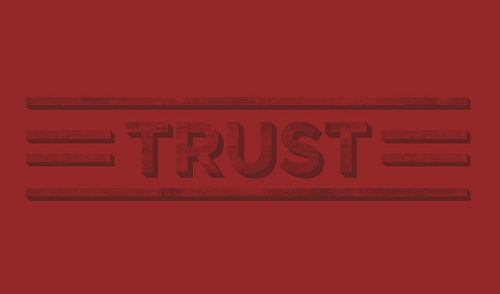As we see over and over in marketing, common sense can be one of the most overlooked areas. Businesses spend tremendous effort and money on getting users to their website. Yet, they lose credibility due to some basic signals.
Before we can begin a discussion on strategy, we must understand what factors people use to assign credibility. The best crafted strategy is useless if users do not find a brand trustworthy online.
Dr. BJ Fogg, a professor at Stanford University, has been studying the overlap between psychology and innovation as it relates to digital technology. His research spans fascinating topics such as how people are persuaded via social media, mobile and social networks. He has also studied in-depth trust online and web credibility.
From his Stanford Persuasive Technology Lab, Dr. Fogg and colleagues identified ten factors for establishing web credibility with digital marketing:
- Make it easy to verify the accuracy of the information on your site. You can build web site credibility by providing third-party support (citations, references, source material) for information you present, especially if you link to this evidence. Even if people don’t follow these links, you’ve shown confidence in your material.
- Show that there’s a real organization behind your site. Showing that your web site is for a legitimate organization will boost the site’s credibility. The easiest way to do this is by listing a physical address. Other features can also help, such as posting a photo of your offices or listing a membership with the chamber of commerce.
- Highlight the expertise in your organization and in the content and services you provide. Do you have experts on your team? Are your contributors or service providers authorities? Be sure to give their credentials. Are you affiliated with a respected organization? Make that clear. Conversely, don’t link to outside sites that are not credible. Your site becomes less credible by association.
- Show that honest and trustworthy people stand behind your site. The first part of this guideline is to show there are real people behind the site and in the organization. Next, find a way to convey their trustworthiness through images or text. For example, some sites post employee bios that tell about family or hobbies.
- Make it easy to contact you. A simple way to boost your site’s credibility is by making your contact information clear: phone number, physical address, and email address.
- Design your site so it looks professional (or is appropriate for your purpose). We find that people quickly evaluate a site by visual design alone. When designing your site, pay attention to layout, typography, images, consistency issues, and more. Of course, not all sites gain credibility by looking like IBM.com. The visual design should match the site’s purpose.
- Make your site easy to use — and useful. We’re squeezing two guidelines into one here. Our research shows that sites win credibility points by being both easy to use and useful. Some site operators forget about users when they cater to their own company’s ego or try to show the dazzling things they can do with web technology.
- Update your site’s content often (at least show it’s been reviewed recently). People assign more credibility to sites that show they have been recently updated or reviewed.
- Use restraint with any promotional content (e.g., ads, offers). If possible, avoid having ads on your site. If you must have ads, clearly distinguish the sponsored content from your own. Avoid pop-up ads, unless you don’t mind annoying users and losing credibility. As for writing style, try to be clear, direct, and sincere.
- Avoid errors of all types, no matter how small they seem. Typographical errors and broken links hurt a site’s credibility more than most people imagine. It’s also important to keep your site up and running.
Key takeaway: This study was published almost ten years ago and the majority of these tips are very straight forward. Yet, something like “Make your site easy to use – and useful” is something the majority of websites fail to deliver on still today and should be a major part of their online strategy.
Remember:
- Attention is the true currency online – ask for it only if you can deliver a return to your user.
- If your site does not look trustworthy, visitors are back to the SERPs and most likely gone forever.
- Strive to get out the way of your users and make interacting with your brand’s website as easy as possible.
Be sure to use this 10 step checklist before launching into any strategy or design discussions.
Bonus: Here’s a great video from Dr. Fogg talking about the art and science of digital:

